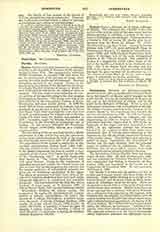

Cuenca (CONCA IN INDUS) Diocese of, a suffragan of Quito, in the Republic of Ecuador, South America, created June 13, 1779. The episcopal city, which has 30,000 inhabitants, is situated 7700 feet above the sea, in a broad plain of the province of Azuay, about seventy-five miles southeast of Guayaquil. Peruvian antiquities abound in the vicinity. Cuenca is the second see in importance of the Ecuadorian provinces. It includes the civil divisions of Azuay, of which Cuenca is the capital, and Canar, the capital of which is Azogues. The first missions were centerd in the eastern portion of the republic owing to the slow progress of civilization elsewhere. The Jesuits were first in the field followed by the Franciscans, Fathers of Mercy, Dominicans, and some secular priests. In 1599 the Jesuit Rafael Ferrer penetrated to Cofanes, and his associates in the Society of Jesus, Lucas de la Cueva and Gaspar Cujia, later organized the work that went on with so much success for religion and civilization during 130 years, until the Society was expelled in 1767. A mission, under the Salesian Fathers, is now in operation in the Vicariate of Gualaquiza, east of Cuenca. To this diocese belonged the Franciscan Vicente Solano (1790-1865), famous as a Catholic controversialist.
The first bishop of the see was Jose Carrion y Marfil, consecrated in 1786, and he has had nine successors, during whose administrations the faith of the people has been loyally preserved in spite of all difficulties. The organization of the diocese is mainly due to that excellent administrator, Bishop Toral (1861-1883), who also assisted at the Vatican Council. Devotion to the Blessed Sacrament has been so notable a characteristic of the diocese that Cuenca has won the title of the “Eucharistic City”. A special Eucharistic feast known as “The Cuenca Septenary” is kept with great fervor. Owing to the domination of radicalism in national politics the Church is not now able to make very special progress in the republic, and the secular spoliation of ecclesiastical property has given rise to scandalous usurpations of her rights. The effects of continual civil strife have been as disastrous to religious progress as they have been debilitating and destructive to commercial and industrial prosperity. The appointment by the Holy See, after a vacancy of seven years, on January 11, 1907, of Bishop Manuel Maria Polit has had beneficial results.
STATISTICS.—Parishes, 60; priests, secular 130, seminarians 18, regular 60; lay brothers 25; Congregations of women, contemplative 70, active 140, novices 50; 1 college, 120 students; 2 literary academies, 40 pupils; 2 schools, Christian Brothers, 1300 pupils; 55 parish schools (boys), 1500 pupils; 48 (girls), 785 pupils; 2 hospitals; 1 home for aged, 20 inmates, 1 orphan asylum, 15 inmates; 1 House of Good Shepherd, 14 penitents; 1 asylum, 50 children. Catholic population 200,000,
TOHLAS ALVARADO

